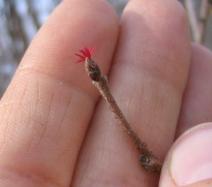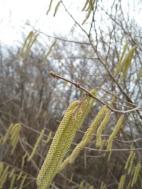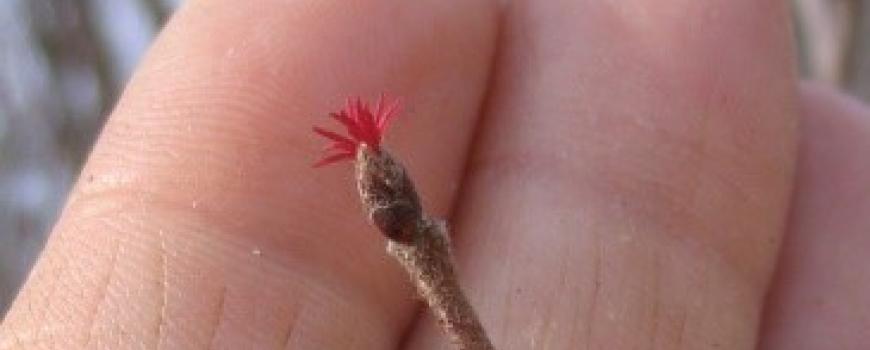Last week we shared an image of honeysuckle starting to leaf out in the Marianist Nature Preserve, and compared it to our native trees and shrubs whose buds had not yet started to break. That doesn't mean our native woody species are dormant, however. Many of them are in bloom right now, but you may not know it unless you suffer from allergies. Heavy pollen counts in the early season can be correlated to maples as the wind carries pollen through the leafless tree canopy with ease—a successful evolutionary strategy! Think of all those ‘helicopter’ seeds that will drop in just a few weeks; they're getting their starts right now.
Of course, wind pollinated and insect or bird pollinated strategies aren't entirely exclusive. Some very early bees will gather pollen from trees. The trees aren't producing nectar or showy flowers to attract them, though, and their importance to any eventual seed crops is marginal.
Other wind pollinated trees include many of the nut producing species such as american hazel, oaks, walnuts.


Female (pistillate) flowers and male (staminate flowers) are often separate and often open or reach maturity at different times to increase cross-pollination. Female flowers are often minute, as they're not putting on a bit show. The heavier pollen-laden male flowers are easier to distinguish (think of male catkins of hazel, for instance).
By contrast to nut trees, most fruit trees, spicebush, pawpaw and persimmon as examples, are insect pollinated and have much larger, showier flowers. But we're getting ahead of the season there. More on fruit pollination later this spring!




